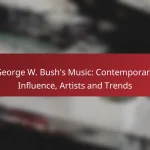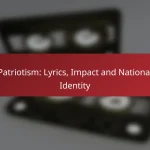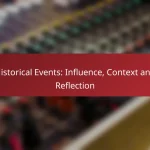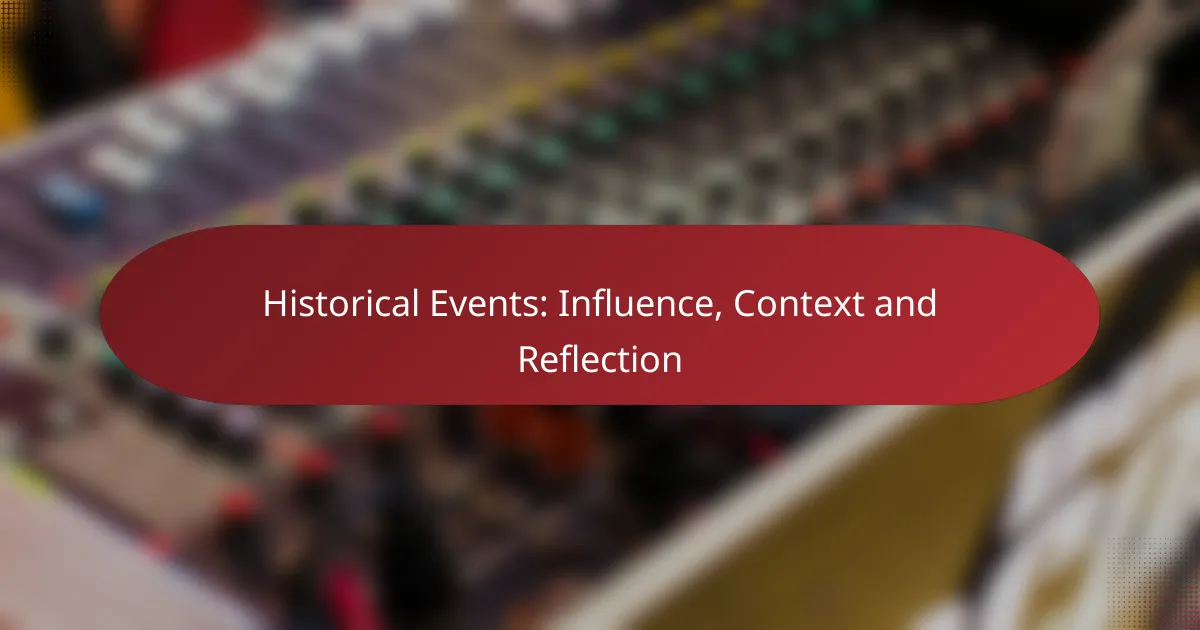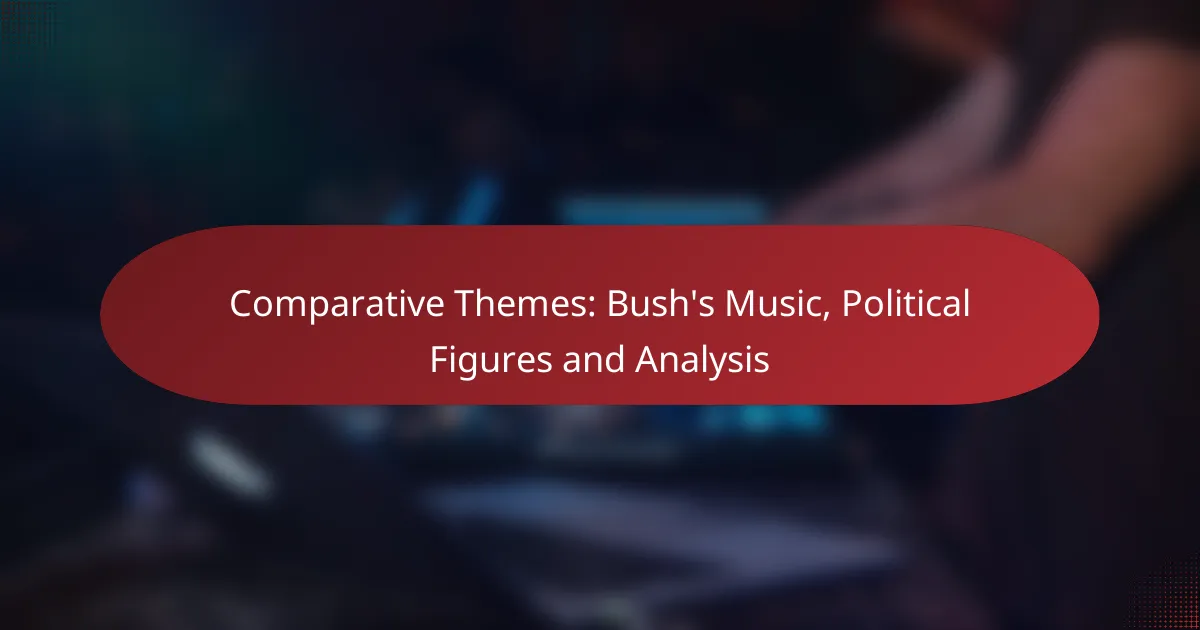Common motifs in musicology encompass recurring themes and patterns that significantly shape the emotional and structural identity of musical works. These motifs not only enhance the listener’s experience but also serve as vital tools for composers, allowing for the development and variation of recognizable musical ideas. Analyzing historical patterns of motifs reveals the evolution of distinct styles across different musical eras, reflecting broader cultural and artistic transformations.

What are common motifs in musicology?
Common motifs in musicology refer to recurring themes, patterns, or elements that appear across different musical works. These motifs can enhance the emotional impact, structure, and identity of a piece, making them essential for understanding music’s cultural and artistic significance.
Repetition and variation
Repetition and variation are fundamental techniques in music that create familiarity while maintaining listener interest. By repeating a motif with slight alterations, composers can evoke different emotions or highlight changes in the narrative. For example, a melody might be played in a different key or with varied instrumentation to keep it fresh.
When employing repetition, consider the balance between predictability and surprise. Too much repetition can lead to monotony, while too little may confuse the listener. Aim for a mix that enhances engagement without sacrificing coherence.
Symbolism in lyrics
Symbolism in lyrics often serves as a powerful motif, conveying deeper meanings and emotions. Lyrics can use metaphorical language or recurring imagery to connect with listeners on a personal level. For instance, a song might repeatedly reference nature to symbolize freedom or escape.
When analyzing lyrics, pay attention to recurring themes and their cultural context. Understanding the symbolism can enrich the listening experience and provide insights into the artist’s intent. Look for patterns that resonate with universal human experiences, as these often have the most significant impact.
Melodic patterns
Melodic patterns are sequences of notes that create recognizable musical phrases. These patterns can be simple, like a short motif, or complex, involving variations that develop throughout a piece. They often serve as hooks that make a song memorable.
To create effective melodic patterns, focus on intervals and rhythmic structures that appeal to your target audience. Experiment with different combinations to find what resonates. A well-crafted melodic pattern can elevate a composition and enhance its emotional depth.
Harmonic structures
Harmonic structures provide the foundation for musical motifs, influencing the overall mood and direction of a piece. Common harmonic progressions, like the I-IV-V, create a sense of resolution and familiarity, while more complex structures can evoke tension and release.
When working with harmonic structures, consider how they interact with melodic motifs. The relationship between harmony and melody can significantly affect the listener’s experience. Aim for progressions that support and enhance your motifs, ensuring they complement rather than clash with one another.

How do motifs influence musical composition?
Motifs play a crucial role in musical composition by providing a recognizable musical idea that can be developed and varied throughout a piece. They help to unify the composition and guide listeners through the emotional landscape of the music.
Creating thematic coherence
Motifs contribute to thematic coherence by establishing a musical identity that recurs in various forms. This repetition allows listeners to connect different sections of a piece, enhancing their understanding and appreciation of the overall structure.
For example, a simple melodic motif introduced at the beginning of a symphony may reappear in altered forms in later movements, creating a sense of unity. Composers often use variations of motifs to explore different moods while maintaining a cohesive theme.
Enhancing emotional impact
Motifs can significantly enhance the emotional impact of a composition by evoking specific feelings or memories. When a motif is associated with a particular emotion, its repetition can amplify that emotional response in the audience.
Consider how a minor motif might convey sadness or tension, while a major motif can evoke joy or triumph. By strategically placing these motifs throughout a piece, composers can guide the audience’s emotional journey and create a more profound listening experience.
Facilitating audience engagement
Motifs facilitate audience engagement by providing familiar touchpoints that listeners can latch onto. When motifs are repeated, they create anticipation and recognition, making the music more accessible and enjoyable.
Composers can employ motifs to encourage audience participation, such as clapping or singing along, especially in popular music genres. By using catchy motifs, artists can create memorable hooks that resonate with listeners, increasing the likelihood of repeated listens and deeper connections to the music.
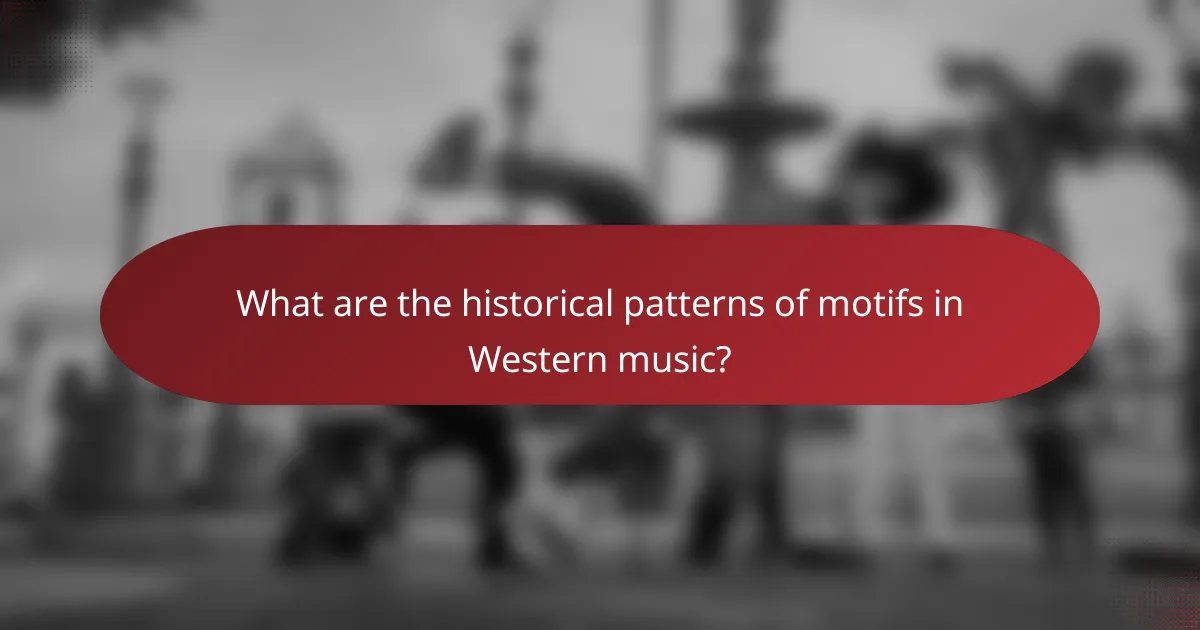
What are the historical patterns of motifs in Western music?
Historical patterns of motifs in Western music reveal distinct styles and techniques that have evolved over centuries. Each era, from Baroque to modern times, showcases unique characteristics in the use of motifs, reflecting cultural and artistic shifts.
Baroque ornamentation
Baroque music, spanning from the late 16th to the early 18th century, is known for its elaborate ornamentation. Composers like Bach and Vivaldi often employed motifs that included trills, turns, and other embellishments to enhance melodic lines. These ornaments were not merely decorative; they added emotional depth and complexity to the music.
When analyzing Baroque motifs, consider how they interact with harmonic progressions. The use of sequences and repetition is common, creating a sense of movement and tension. Musicians should practice these ornaments to master their execution, ensuring they enhance rather than overwhelm the primary melody.
Romantic expressiveness
The Romantic era, from the early 19th to the early 20th century, emphasized emotional expression and individualism in music. Composers like Chopin and Tchaikovsky utilized motifs to convey deep feelings, often employing lyrical melodies and rich harmonies. This period saw motifs that were more fluid and less rigid than those of the Baroque.
In Romantic music, motifs often serve as themes that evolve throughout a piece, reflecting changes in mood and character. Musicians should focus on dynamics and phrasing to bring out the emotional nuances of these motifs, ensuring that each performance resonates with the audience.
Modern minimalism
Modern minimalism, emerging in the mid-20th century, is characterized by the use of simple motifs and repetitive structures. Composers like Steve Reich and Philip Glass often utilize short, rhythmic patterns that gradually evolve over time. This approach contrasts sharply with the complexity of earlier styles, focusing instead on clarity and texture.
When working with minimalist motifs, musicians should pay attention to timing and precision, as small variations can significantly impact the overall effect. It’s essential to maintain a steady pulse while exploring the subtle shifts that arise from repetition, creating a meditative and immersive experience for listeners.

How do cultural contexts shape musical motifs?
Cultural contexts significantly influence musical motifs by embedding local traditions, beliefs, and social norms into the music. These motifs often reflect the historical and emotional landscape of a community, making them unique to specific regions or cultures.
Regional folk influences
Regional folk influences play a crucial role in shaping musical motifs, as they incorporate local stories, instruments, and rhythms. For example, the use of the sitar in Indian classical music creates motifs that are distinct from those found in Western folk traditions, which may utilize the guitar or fiddle.
Musicians often draw inspiration from their surroundings, leading to motifs that resonate with local experiences. This can include the incorporation of natural sounds or traditional dances, which further enrich the musical narrative.
Religious motifs in sacred music
Religious motifs in sacred music are designed to evoke spiritual feelings and reflect the beliefs of a community. For instance, Gregorian chants in Christianity utilize specific melodic patterns that aim to enhance the worship experience and create a meditative atmosphere.
Different religions often have unique musical characteristics, such as the use of call-and-response in African spirituals or the intricate rhythms of Islamic devotional music. These motifs serve not only as artistic expressions but also as tools for communal identity and worship.
Global fusion trends
Global fusion trends have emerged as cultures interact and blend, resulting in new musical motifs that combine elements from various traditions. This can be seen in genres like world music, where artists mix jazz, reggae, and traditional folk, creating innovative sounds that appeal to diverse audiences.
Musicians experimenting with fusion must be mindful of cultural appropriation and strive for authenticity. Collaborations between artists from different backgrounds can lead to rich, hybrid motifs that honor the origins while creating something fresh and engaging.

What tools are available for motif analysis?
Several tools are available for motif analysis, each serving different aspects of musicology. These tools range from music notation software to audio analysis platforms, enabling musicians and researchers to dissect and understand musical motifs effectively.
Music notation software
Music notation software allows users to create, edit, and analyze musical scores. Tools like Sibelius, Finale, and MuseScore provide features for visualizing motifs, making it easier to identify patterns and repetitions in compositions. These programs often support MIDI input, enabling users to play back motifs and hear how they sound in context.
When using notation software, consider the learning curve associated with each program. Some may offer extensive features but require more time to master. For quick motif analysis, simpler software like MuseScore might be more accessible for beginners.
Audio analysis platforms
Audio analysis platforms focus on examining recorded music rather than written scores. Software such as Sonic Visualiser and Audacity allows users to visualize sound waves, spectrograms, and frequency distributions, which can reveal underlying motifs not immediately apparent in notation. These tools are particularly useful for analyzing live performances or recordings where notation may not exist.
While using audio analysis platforms, pay attention to the quality of the audio files being analyzed. High-quality recordings yield better results in motif detection. Additionally, familiarize yourself with the various analysis features, as some platforms offer advanced tools for pitch tracking and rhythm analysis, which can enhance your understanding of motifs within a piece.
